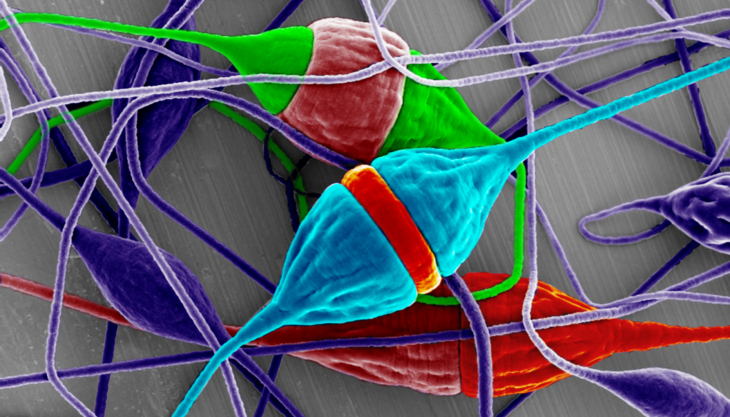Micro-/Nanotechnology
The basis for the design of micro- and nanostructured, multifunctional materials is molecular organization. It encompasses multi-component materials as well the hierarchical, geometric structure of molded bodies. In our “Micro-/Nanotechnology” department, we pursue experimental approaches in the areas of manufacturing processes and physical characterizations as well as concepts for predicting functions using multiscale models. Structural function, movement and adaptivity through the reinforcement of nano-effects at the macroscopic level thereby facilitate, among other aspects, multifunctional, shape-changing or biointeractive materials.
Our generic approach aims to create bioinstructive cell culture substrates, active implants and artificial muscles simply by varying geometry and structural function with a limited number of materials.
Profile

Photo: Hereon
A key step towards the application of polymeric biomaterials in medicine or medical technology is their processing into a wide variety of devices. We therefore concern ourselves with various polymer processing technologies starting from the polymer melt (e.g. extrusion, injection molding) or the polymer solution (e.g. electrospinning). On the one hand this includes the processing of polymers, blends and composites thereof to simple semi-finished products such as films, monofilaments or tubes and the manufacture of porous foam structures or microparticles as well as the production of very complex components and demonstrators consisting of several materials under cleanroom conditions.
In addition to the processing of plastics we develop methods for modification of polymer components with additional new features, such as shape-memory effects. Upon selection of thermo-mechanical treatments, we can control whether a plastic can memorize one or more shapes, the temperature at which the change in shape takes place and whether it should be reversible or not. In this context, the basic research into the structure-property relationships of polymers on different length scales of the molecular structure to the component is of particular importance for us.
